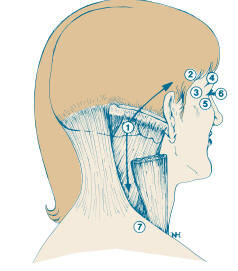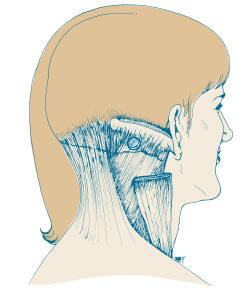|
|
|||||
|
Home | Ernest Syndrome Headache | Temporal Tendonitis Headache | Splenius Capitis Neck Pain TMJ | FAQ | Contact Us |
|||||
Do you have Splenius Capitis Neck Pain and Headache?
Splenius Capitis Muscle Syndrome is a facial pain condition first described by Dr. Ernest in 1983. The injured muscle radiates pain from the rear of the head, up over the ear, to the cheek-bone, into the temple and behind as well as over the eye. This disorder also radiates pain to the neck, shoulder and the arm. In the intense phase of the headache, there may by sensitivity of the eye to light as well as nausea and vomiting. The symptoms may mimic Migraine headache and Temporal Tendonitis.
|
Splenius Capitis Muscle Syndrome
Injury to this muscle often results from motor vehicular accidents, falls, blunt trauma, and repeated or prolonged head posture such as looking up to the 10 and 2 o'clock positions. |
||||
|
D R. ERNEST'S PROCEDURE:
|
|||||


